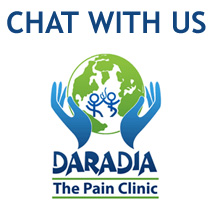Common Migraine
A migraine is a primary headache disorder characterised by recurrent headaches that are moderate to severe. It is the most common complaint with which patients present to a clinician.
Migraine was first comprehensively classified in 1988, which was updated by “The International Headache Society” in 2018 which is widely used by pain physicians now.
The six-subclasses of Migraine:
- Migraine without aura or “Common Migraine”
- Migraine with aura or “Classic Migraine”
- Chronic migraine
- Complications of migraine
- Probable migraine
- Episodic syndromes that may be associated with migraine.
Common Migraine:
Most common type of migraine headache, which doesn’t have an early symptom called an aura before headache begins.
Aetiology and pathogenesis:
According to theory several chemical mediators play a role in migraine. A wave of nerve cell activity spread across the brain and triggers trigeminal neuralgia.
There is release of variety of neurotransmitters causing inflammatory process and pain.
It often runs in family, so there might be genetic link according to researchers.
There can be triggering factors like certain foods, smells, stress, loss of sleep, etc.
Often begin in childhood and gets worsened by adolescence.
Interesting fact “more boys than girls” have migraine but “more adult women than men” have migraine.
A migraine without aura is “not life-threatening”.
Symptoms:
Throbbing or steady headache in the front. • One or both sides
Last for 4-72 hours
Can be associated with nausea, vomiting, dizziness
Can get aggravated with routine activity, light and sound.
Diagnostic criteria:
The International headache society recommend the 5-4-3-2-1 criteria to diagnose migraine. This number series stands for
- Having 5 or more attacks, each with a duration of 4 hours to 3 days.
- Headache having at least 2 of the following qualities:
Occurring on one side; Pulsating; Causing moderate to severe pain aggravated by activity
- Having at least 1 additional symptom such as:
Nausea, Vomiting, Sensitivity to light, Sensitivity to sound
Diagnosis:
Clinical history: to rule out other causes of headaches.
History of at least 5 attacks fulfilling the above criteria.
Medication history.
Imaging studies- CT, MRI
Treatment
Goals:
- Managing acute attacks- abortive treatment, 2. Prevent further attacks- Prophylaxis
Management of acute attacks
- Stay in quiet, dark room
- Cold compresses
- Plenty of oral fluids if no nausea or vomiting
- Analgesics/other medicines
First line of medicines:
- Acetaminophen
- NSAIDs: Ibuprofen, Naproxen
- Triptans: Sumatriptan, Amlotriptan, Elitriptan.
- Combination of Acetaminophen and NSAIDs
- Combination of Triptans and NSAIDs
- Other medications:
- Antiemetics- Metoclopramide, Prochlorperazine
- Dexamethasone
- Ergotamine: Dihydroergotamine
- Lidocaine
Prophylaxis:
Goals: Reduce the attack frequency, severity, and disability. Avoid acute headache medication overuse. Improve the quality of life. Reduce headache-related distress and psychological symptoms.
Indications:
Recurring migraines significantly interfere with their daily routines, despite acute treatment
Failure or overuse of acute therapies.
Uncommon migraine conditions, such as hemiplegic migraine, basilar migraine, migraine with prolonged aura.
Principles:
- Preventive treatment can be pre emptive, short time and chronic.
- Start a medication with highest level of evidence and lowest dose possible with minimal side effects.
- A medicine to be tried at least for 2-3months before changing to different medicine of same class or different class of medicine.
- Patient headache frequency should be monitored by maintaining a headache diary.
- Comorbidities to be taken into consideration.
- Gradual withdrawal of medicines to be considered after 6-12months of effective treatment.
- Pregnancy is contraindications for most medicines.
Medicines for prophylaxis:
- Betablockers- Propranolol 40-160mg per day.
- Anticonvulsants- Topiramate, Sodium valproate
- Antidepressants- Amitriptyline-most efficient
- Calcium channel antagonist: Flunarizine
- Alpha-2 agonist: Clonidine
- CGRP inhibitors: new class of medicines. Erenumab, Eptinezumab
The prophylactic medicines have been placed to 5 different classes based on efficacy and safety. Different class of medicines are medicine of choice depending on the co-morbidities. Single medicine or medicine combinations can be tried but a beta blocker and flunarizine combination should be avoided.
In Indian set up the medicine dosage required are much lesser compared to western population.
Non pharmacologic interventions:
- Lifestyle modification- adequate food intake, sleep, avoiding triggering factors.
- Relaxation techniques- meditation and bio-feedback.
- Aerobic exercise
- Hyperbaric oxygen
Interventions:
- Acupuncture or dry needling
- Botox inj in some situations
- Nerve blocks
- Peripheral nerve stimulations
References:
- The International Classification of Headache Disorders 3rd Edition
- (ICHD-3) Abbreviated pocket version.
- Bonica’s Management of Pain 5th Edition.
- Waldman Management of Pain 2nd Edition.
- Migraine: Prophylactic treatment. Rakesh et al, JAPI, vol 58, issue special, April 2010
- Internet resources: WebMD, Medscape, Mayoclinic.org, UpToDate
- Online journals: Journal recent advances in pain, Journal of association of Physicians of India.
Article written by:
Dr. Hamsa Jayasheel.
MBBS, DA, DNB Anaesthesiology
Pain fellow @ Daradia Pain Hospital


